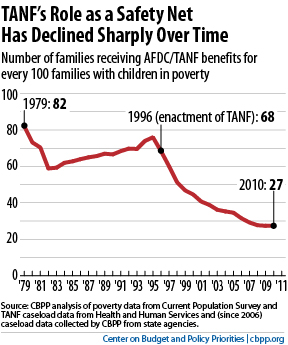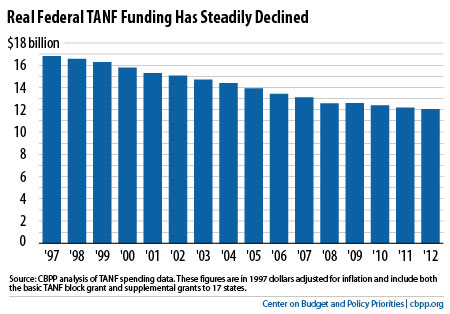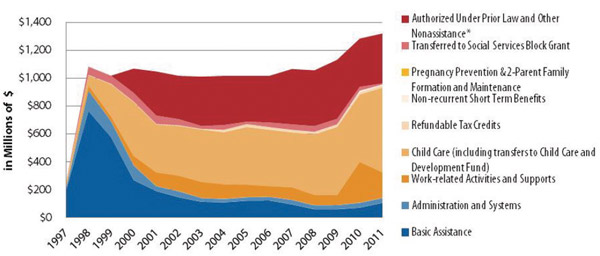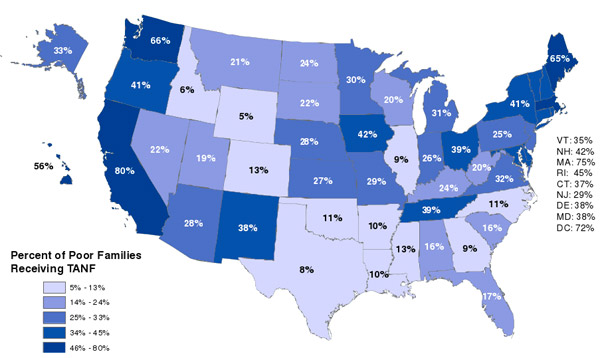Welfare has, if briefly, moved to the center of the campaign thanks to Mitt Romney's stop in Elk Grove Village. Most of the attention has been devoted to the intricacies of TANF versus Romney's messaging; not as much to what's actually happening with welfare. The short answer is that it's evolving, and declining. Harold Pollack, a professor in the University of Chicago's Social Service Administration, has a good catch-up on the issue:
The number of Americans in poverty increased by ten million between 1996 and 2010. Unemployment among low-income single moms has correspondingly grown. Yet TANF serves a progressively declining share of children living in economic need. When welfare reform was enacted, 68 American families received AFDC/TANF benefits for every 100 families with children in poverty. By 2010, only 27 did.
From the Center on Budget and Policy Priorities, here's a look at the proportion of the population TANF (and before it, Aid to Families and Dependent Children) has served over the past three decades:

What's happened? TANF block grants haven't been adjusted for inflation:

In 2001, Illinois spent $602 million in federal TANF funds, and $445 in "maintenance of effort" spending, which is the money the state has to spend to get the federal money, ensuring that the state has some skin in the game. In 2011 dollars, that's equivalent to $765 million and $565 million. In 2011, the state spent $613 million in TANF dollars and $706 million in MOE dollars: a 20 percent increase in state spending and a 20 percent decrease in federal spending, leading to a very small decline in overall spending—in keeping with the general trend of less federal money being available to states across the board.
The nature of welfare spending has changed as well. Here's how welfare dollars are spent in Illinois, in non-inflation-adjusted dollars:

Basic assistance has done from the largest expense to one of the smaller expenses; the largest expense among those categories is child care (46 percent in 2011). Second is "authorized under prior law and other nonassistance"; Megan Cotrell explains what that means. Illinois spends the lowest percentage of its welfare money on basic assistance of any state in the country, tied with Arksansas and North Carolina. Illinois also has one of the lowest percentages of poor families receiving TANF in the country:

As Pollack points out, the monthly caseload in Illinois from the end of AFDC to current TANF figures decreased from 224,000 to 64,000. The number of food stamp recipients has been increasing—500,000 over the course of the recesson and almost one million over the course of the past decade—but the maximum benefit of the two in Illinois, Pollack calculates, is just 60 percent of the poverty line. (As far as the level of TANF and SNAP benefits available per family, Illinois is in the middle of the pack in both.)
Ultimately it's not that much of the federal budget, though it's increased here as a part of the state budget. But far from creating a "cuture of dependency," welfare spending has declined since reforms were passed in 1996, across three presidencies and two parties, as poverty takes up a smaller part of the national political debate.


